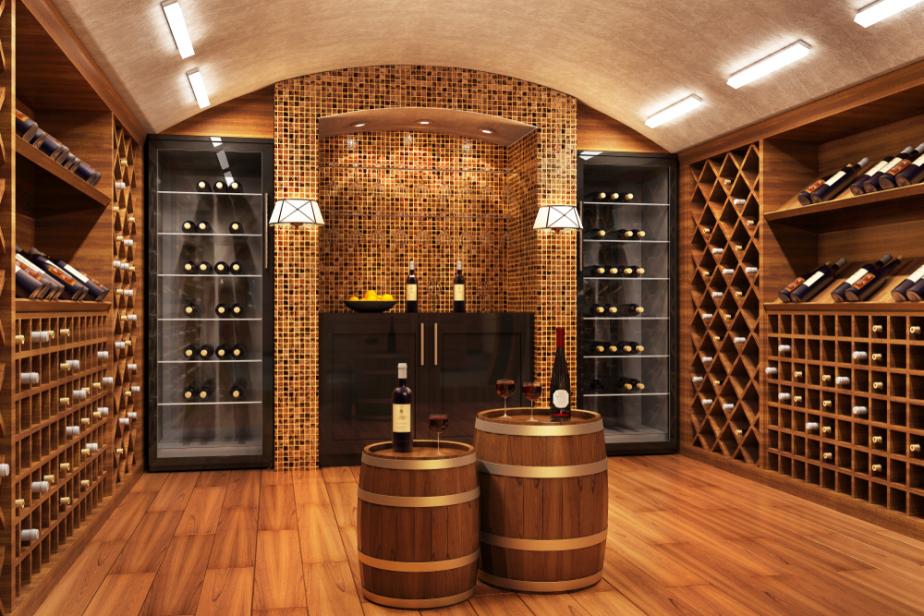
When it comes to home wine storage, we’re all constantly reminded that the way in which we store our wine impacts its flavour. So, instead of wine shelving units and wine rack kits, you might be thinking about home wine cellar ideas. Basement wine cellars and other under-stairs wine storage in the UK are growing in popularity, leaving many of us wondering whether it’s worth it to build a wine cellar.
Here at Cranville Wine Racks, we’re well-equipped to get you started with your very own wine cellar, with anything from 12-bottle timber wine racks to 100-bottle wine racks. In between these solutions, we also supply 20-bottle and 72-bottle wine racks, as well as a 24-bottle wine rack and a 30-bottle metal wine rack. Whether you’re looking for a wall-mounted, a slot-in solution, or simply a bespoke wine rack holding from 1 to 1000s of bottles, we’ve got what you’re looking for.
What's the Purpose of a Wine Cellar?
The first thing that you need to consider when deciding whether building a wine cellar is worth it is the actual purpose of the facility. Quite simply, a wine cellar is built to provide a climate-controlled environment for substantial wine collections. Typically speaking, wine cellars are situated in the basements of homes and have a relatively humid climate.
Does a Wine Cellar Increase Property Value?
In a higher-end home, a wine cellar is certainly a worthwhile investment. In fact, a wine room raises the appraisal of a property, resulting in a higher home value.
What Does a Wine Cellar Need?
A wine cellar should be kept between 7°C and 18°C, as this is the optimal temperature to preserve the flavour of the wine. Similarly, the humidity should remain between 50% and 80% so that the corks are kept moist, but the labels aren’t subject to mildew. On top of this, in the absence of air conditioning, ventilation is imperative to the storage of wine. Finally, a wine cellar should be relatively dark as UV rays can lead to the premature spoiling of wine.
Does a Wine Cellar Require Ventilation?
As previously mentioned, wine cellars require proper ventilation for the purpose of temperature control and perfecting aging conditions. Therefore, you’ll require a cooling unit that is capable of handling temperatures up to 12°C cooler than the temperature on the unit’s exhaust side.
Does a Wine Cellar Require Cooling?
Almost everyone knows that wine needs to be kept at a cool temperature; however, the conditions also need to be stable. This means the temperature can’t fluctuate too much as this doesn’t allow the wine to rest or settle which sets it back in the maturing process. Similarly, wine should be kept away from harsh temperatures, sunlight, vibrations, and humidity.
How Is a Wine Cellar Built at Home?
When building a wine cellar, it is essential to find the perfect location. This needs to be a dark and smaller area that isn’t disturbed by noises and smells. Your wine cellar should utilise an unused, or very little used, space within your home that is overlooked due to it being dingy and enclosed. You can easily transform these less popular places to store a fine wine collection, showcase your variety of wines, and have a clutter-free space dedicated to wine and drinks to avoid the mess of bottles filling the cupboards and fridge in the kitchen!
Once the location of your home wine cellar has been chosen, the building of a wine cellar process can begin. This includes the following steps:
- Furring/Framing walls and ceilings: Furring/ framing is the process of installing strips of wood to raise surfaces or prevent dampness. It also allows room for insulation to be placed. Doing this improves the energy efficiency of your cellar.
- Insulation: Using closed cell insulation is best as it removes the need for an added vapour barrier. It can handle water, vapour and air and prevent them from accumulating on the walls of the wine cellar which stops moisture leaks.
- Drywall and outlets: A wine cellar is a high-humidity room so it’s important to install a type of water-resistant drywall like green board. This resits mould and moisture. Once the drywall is placed, holes need to be cut for ductwork and electrical outlets.
- Wine cellar doors: Choosing the correct doors for your wine cellar is pivotal. Glass isn’t the best option as it provides no insulation. The best option is to buy a door that is designed specifically for wine cellars, but this can be costly. Other than this, using exterior doors gives the best insulation that seals your wine cellar.
- Finish walls: Finishing the walls has a huge impact on the look of your wine cellar. It needs to look how you want it while being humidity resistant. You can finish walls with treatment that allows you to achieve the desired overall look.
- Seal flooring: No matter the flooring you decide to use, it needs to be properly sealed. Concrete is a great choice because it’s less permeable and porous. You can also have cork, porcelain, stone, hardwood, or artificial stone.
- Installing a cooling system: Once the flooring is done and sealed, you can install the cooling system. This should keep the whole space at the correct storage temperatures and humidity levels.
- Place wine cellar wine racks: Finally, finish your cellar with wine cellar wine racks to neatly store your wine collection, make it easier to find wines, and keep them organised while being displayed well.
What Makes a Good Wine Cellar?
Ultimately, a good wine cellar is a dark and enclosed space that isn’t vulnerable to smells, noise, or vibrations. As well as this, the space needs to be properly ventilated and shielded from any draughts. This is especially true if the space is particularly damp as, without ventilation, a musty smell is likely to contaminate your wine bottles.
What is the cost of a wine cellar?
This really depends on the size and scale of the wine cellar at hand. The best thing to do is start off small by using wine racks for 100 bottles which can typically cost £150. After starting this, you can scale up. For example, if you kitted out your cellar with our largest bespoke wine rack, this would hold 480 bottles and will cost around £720 for a fully fledge wine cellar.
If you don’t have a cellar space, this will cost more as there’s a requirement for building work to be done. If this is the case, it can cost between £11,000 and £135,000.
How Long Can You Keep Red Wine in a Cellar?
This depends on the type of wine; however, a Cabernet Sauvignon can be stored the longest, between seven and 10 years. Otherwise, a Pinot Noir can be stored for five years, whilst a Merlot can be stored anywhere between three and five years. Finally, a Zinfandel can be stored for between two and five years.
Kit Out Your Wine Cellar with Cranville Wine Racks
If the above information has led you to believe that building a home wine cellar is worth it, look no further than Cranville Wine Racks for all the storage equipment. If you have any queries about our product range, please don’t hesitate to get in touch.
 Designed and Manufactured in the UK
Designed and Manufactured in the UK 